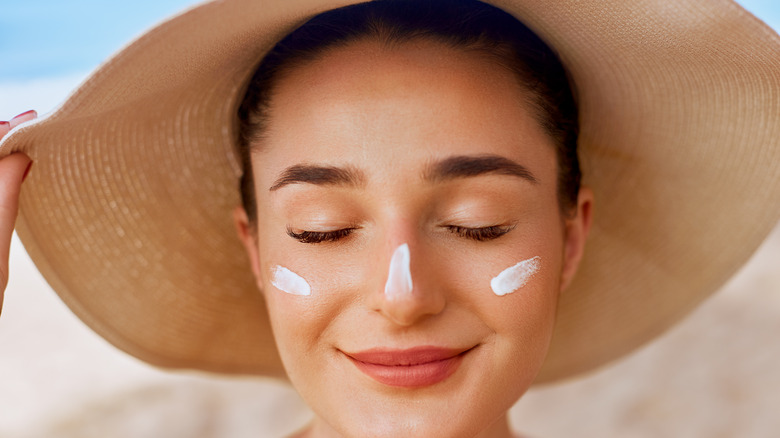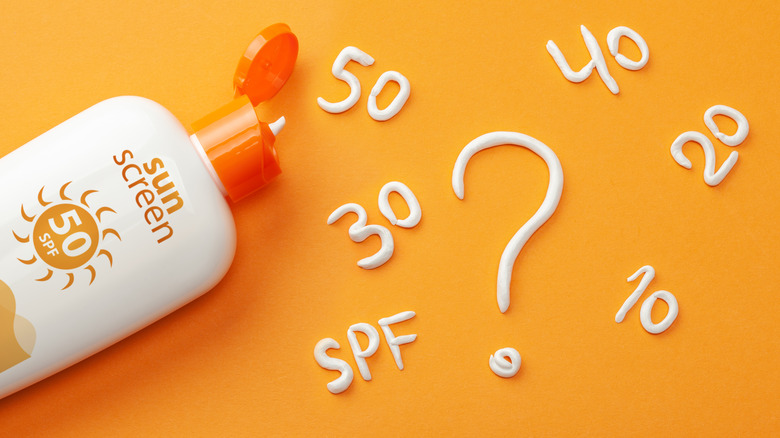What Is Homosalate And Why Is It In Your Sunscreen?
When summer sunshine is gracing our lives, most of us revel in going out and enjoying it. Whether lying on the beach, swimming in a pool, biking through the neighborhood, or enjoying an outdoor barbeque, soaking up the sun feels lovely. But in order to do it safely, many of us need sunscreen. Over the past few years, however, there has been a lot of media coverage regarding the ingredients we are slathering onto our bodies when we apply our sunscreen. Concern over safety for both our selves and the environment has reached an all-time high, and now more than ever, folks are reading the back of their sunscreen containers and asking, "what's that?"
One such ingredient you might notice listed on the back of your tube of sunscreen is called Homosalate. This is a chemical sunscreen (as opposed to physical/mineral sunscreens). The benefit of Homosalate is that it blocks UVB rays, which can damage skin (via Byrdie). Unlike physical sunscreens, which work by sitting on top of the skin and deflecting the sun's rays, chemical sunscreens like Homosalate need to be absorbed into the skin to function. And it's that absorption into our bodies that has folks asking: is it safe?
Safety and side effects of homosalate
According to Safe Cosmetics, Homosalate, which belongs to a class of chemicals called salicylates, might be listed on your sunscreen or cosmetic bottles as Homosalate, Homomenthyl salicylate, HMS, or HS; 3,3,5-trimethyl-cyclohexyl-salicylate. While the most common side effect of this chemical is an allergic reaction in the form of skin irritation (via Byrdie), Safe Cosmetics notes that it is also considered an endocrine disrupter, meaning it can affect human hormone levels when absorbed into the body.
Those with sensitive skin are cautioned to use physical sunscreens rather than chemical to avoid irritation, and pregnant people and other vulnerable populations are also advised to use physical rather than chemical sunscreens. The Environmental Working Group rates Homosalate as a 2-4 on their scale of safe to unsafe ingredients (0 being the cleanest and safest, 10 being unsafe and toxic). The EWG calls it "fair" as opposed to "good" or "bad." In other words, it is far from the most dangerous of cosmetic ingredients, but it is good to know what you're putting on your skin, especially if you are sensitive or prone to irritation, in which case, shooting for a sunscreen that relies fully on physical sunscreens rather than chemical is a good idea.

